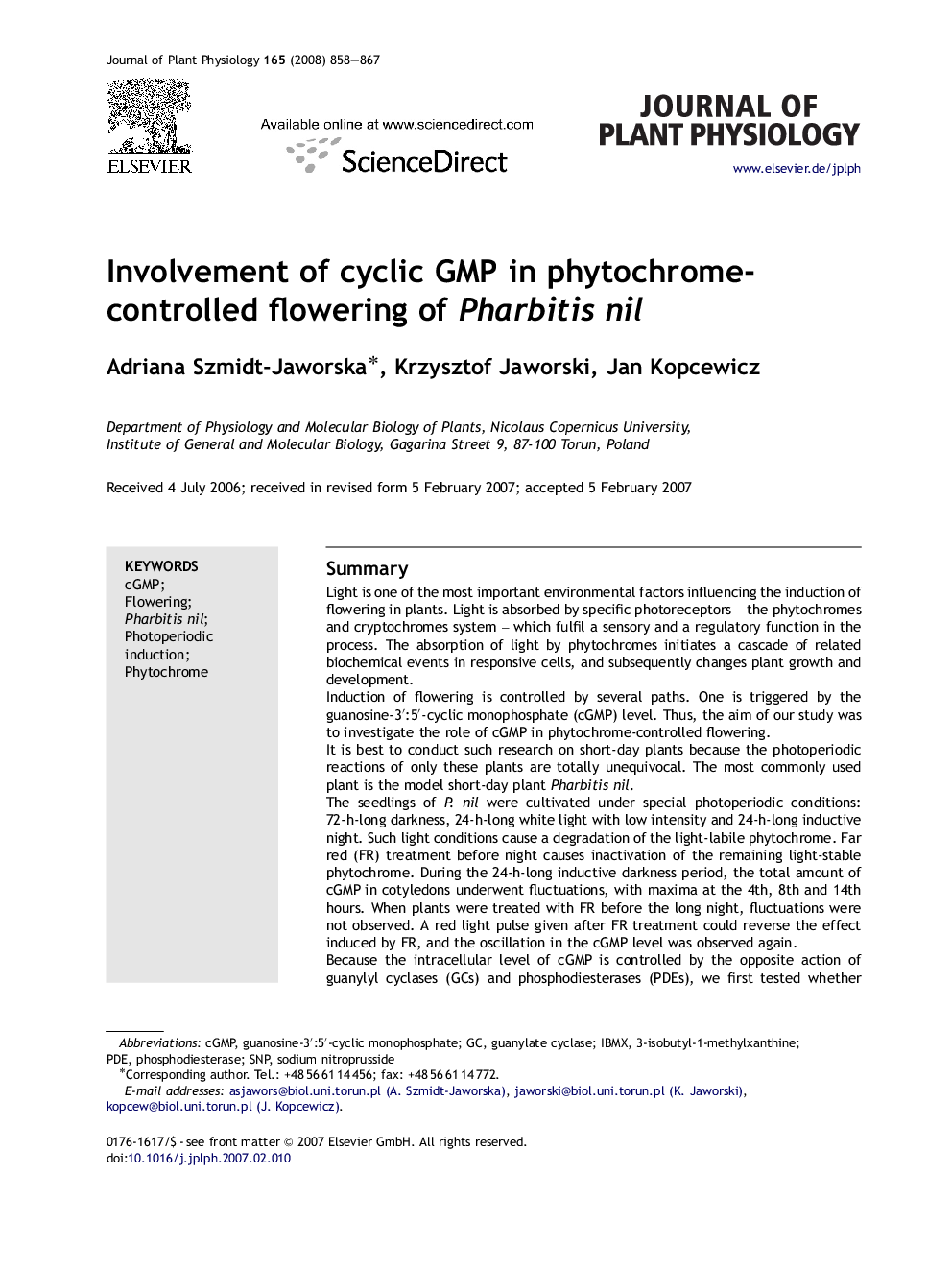| کد مقاله | کد نشریه | سال انتشار | مقاله انگلیسی | نسخه تمام متن |
|---|---|---|---|---|
| 2057259 | 1075872 | 2008 | 10 صفحه PDF | دانلود رایگان |

SummaryLight is one of the most important environmental factors influencing the induction of flowering in plants. Light is absorbed by specific photoreceptors – the phytochromes and cryptochromes system – which fulfil a sensory and a regulatory function in the process. The absorption of light by phytochromes initiates a cascade of related biochemical events in responsive cells, and subsequently changes plant growth and development.Induction of flowering is controlled by several paths. One is triggered by the guanosine-3′:5′-cyclic monophosphate (cGMP) level. Thus, the aim of our study was to investigate the role of cGMP in phytochrome-controlled flowering.It is best to conduct such research on short-day plants because the photoperiodic reactions of only these plants are totally unequivocal. The most commonly used plant is the model short-day plant Pharbitis nil.The seedlings of P. nil were cultivated under special photoperiodic conditions: 72-h-long darkness, 24-h-long white light with low intensity and 24-h-long inductive night. Such light conditions cause a degradation of the light-labile phytochrome. Far red (FR) treatment before night causes inactivation of the remaining light-stable phytochrome. During the 24-h-long inductive darkness period, the total amount of cGMP in cotyledons underwent fluctuations, with maxima at the 4th, 8th and 14th hours. When plants were treated with FR before the long night, fluctuations were not observed. A red light pulse given after FR treatment could reverse the effect induced by FR, and the oscillation in the cGMP level was observed again.Because the intracellular level of cGMP is controlled by the opposite action of guanylyl cyclases (GCs) and phosphodiesterases (PDEs), we first tested whether accumulation of the nucleotide in P. nil tissue may be changed after treatment with a GC stimulator or PDE inhibitor.Accumulation of the nucleotide in P. nil cotyledons treated with a stimulator of cGMP synthesis (sodium nitroprusside) was markedly (approximately 80%) higher. It was highest in the presence of dipyridamole, whereas 3-isobutyl-1-methylxanthine did not significantly affect cGMP level.These results show that the analysed compounds were able to penetrate the cotyledons’ tissue, and that they influenced enzyme activity and cGMP accumulation.FR light applied at the end of the 24-h-long white light period inhibited flowering. Exogenous cGMP added on cotyledons could reverse the effect of FR, especially when the compound was applied in the first half of the long night. Flowering was also promoted by exogenous application of guanylyl cyclase activator and phosphodiesterase inhibitors, and in particular dipyridamole.The results obtained suggest that an endogenous cGMP system could participate in the mechanism of a phytochrome-controlled flowering in P. nil.
Journal: Journal of Plant Physiology - Volume 165, Issue 8, 26 May 2008, Pages 858–867